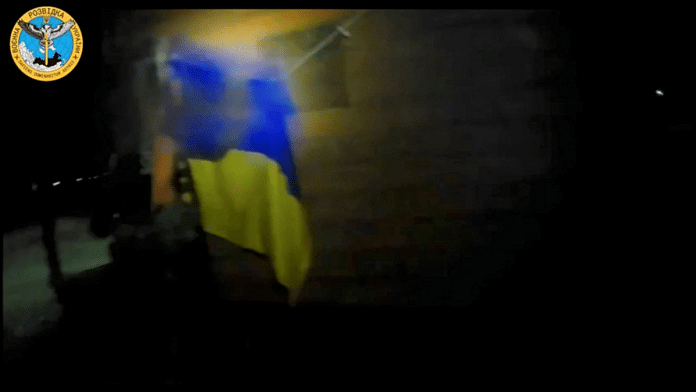New Delhi: Coinciding with the 18-month conflict this week on 24 August, the Ukrainian military commemorated its Independence Day by managing to recapture parts of Crimea that fell into Russian hands in 2014.
Ukrainian soldiers retook the disputed southern town of Robotyne on 23 August as part of a counter offensive launched late July in multiple locations against Russia.
Ukrainian intelligence units together with the navy landed on the western side of Russia-occupied Crimea to strike at Russian military assets there, according to Ukrainian military intelligence spokesman Andrii Yusov, AP reported.
The Ukrainian Military Intelligence Directorate (GUR) announced and posted footage of a strike on a Russian S-400 anti-aircraft missile system near Olenivka, Crimea, 116 km northwest of Sevastopol and about 140 km south of Kherson City.
“The Ukraine defense forces are still blocking Russian soldiers from moving farther into Mar’inka district of Donetsk region in that direction. In the Krasnohorivka area of the Donetsk region, the enemy conducted an airstrike. Artillery fire was directed at the communities of Maryinka, Pobieda, Elizavetivka, Novomykhailivka, Katerynivka, Kostyantynivka, and Antonivka in the Donetsk area,” the Ukrainian armed forces general staff posted on Facebook
Danish Defence Minister Jakob Ellemann-Jensen, meanwhile, has announced that his country along Netherlands will supply Ukraine with F-16 fighters that “can be used by them within their own territory”.
Till the middle of June, Ukrainian forces made limited mechanised assault to breach Russian defenses in the south, but were unsuccessful. Hence, they changed to slower but more cautious operations, hitting Russian rear areas with long-range, precise strikes.
On 26 July, Ukraine started the major phase of counteroffensive, with a serious effort to breach Russian defenses in western Zaporizhia Oblast. The counteroffensive is taking place in three major sectors at the front in the Southeast and Northeast of Ukraine.
Washington-based think tank Institute of Study of War (ISW) said that Ukrainian forces advanced in northeast of Robotyne, 10 km south of Orikhiv, in western Zaporizhia Oblast and on the Donetsk-Zaporizhia Oblast border.
These tactically important Ukrainian successes in and around Robotyne are deepening the Ukrainian breach of Russian defensive lines there and exposing the secondary lines of defence.
This, the ISW notes, may lead Russians to lose positions near the western flank of the Ukrainian breach and therefore giving Ukrainian forces more manoeuvre space to launch offensive operations against the Russian secondary line of defecse that runs south of Robotyne to the western outskirts of Verbove.
The counteroffensive’s major objective is to destroy the ‘land bridge’ that connects Russia with the annexed Crimean Peninsula in order to cut off supply routes in southern Ukraine.
However, American officials claimed that rather than concentrating on it, Ukrainian leaders had split their forces and weapons nearly equally between the east and the south.
To keep up with the demand of the weapons, Ukraine is now adapting to newer technology. As reported by The Economist, it is using 3D-printed “candy bombs” — which are filled with C4 explosives — against Russian forces.
A notable and ongoing feature of the Kremlin’s assault against Ukraine has been the use of long-range missile attacks on cities and infrastructure.
In 2023, Russia continued to regularly attack a range of military and civilian targets throughout Ukraine, using costly, long-range missiles. The objectives of these strikes have fluctuated throughout time, and both the intensity and quality of the ammunition used have changed. Moscow then resumed long-range drone and missile strikes on Ukrainian cities in May.
In the long run, a RAND analysis claims that in the face of economic sanctions, Russia lacks the potential for a protracted conflict. Even if it can continue to make revenue from the sale of gas and oil, Russia lacks the capacity to produce even basic military equipment, let alone sophisticated arsenals.
The number of Ukrainian and Russian troops killed or wounded since the war in Ukraine began in February 2022 is nearing 500,000, The New York Times reported, citing unnamed American officials.
According to the report, there may have been up to 120,000 fatalities and 170,000–180,000 wounded among Russia’s military casualties, which are now close to 300,000. A further 100,000–120,000 Ukrainians were injured, bringing the total number of fatalities to over 70,000.
(Edited by Tony Rai)
Also Read: Deployed in Ukraine, Russia’s anti-tank ‘jumping mines’ have even US devising similar munitions



